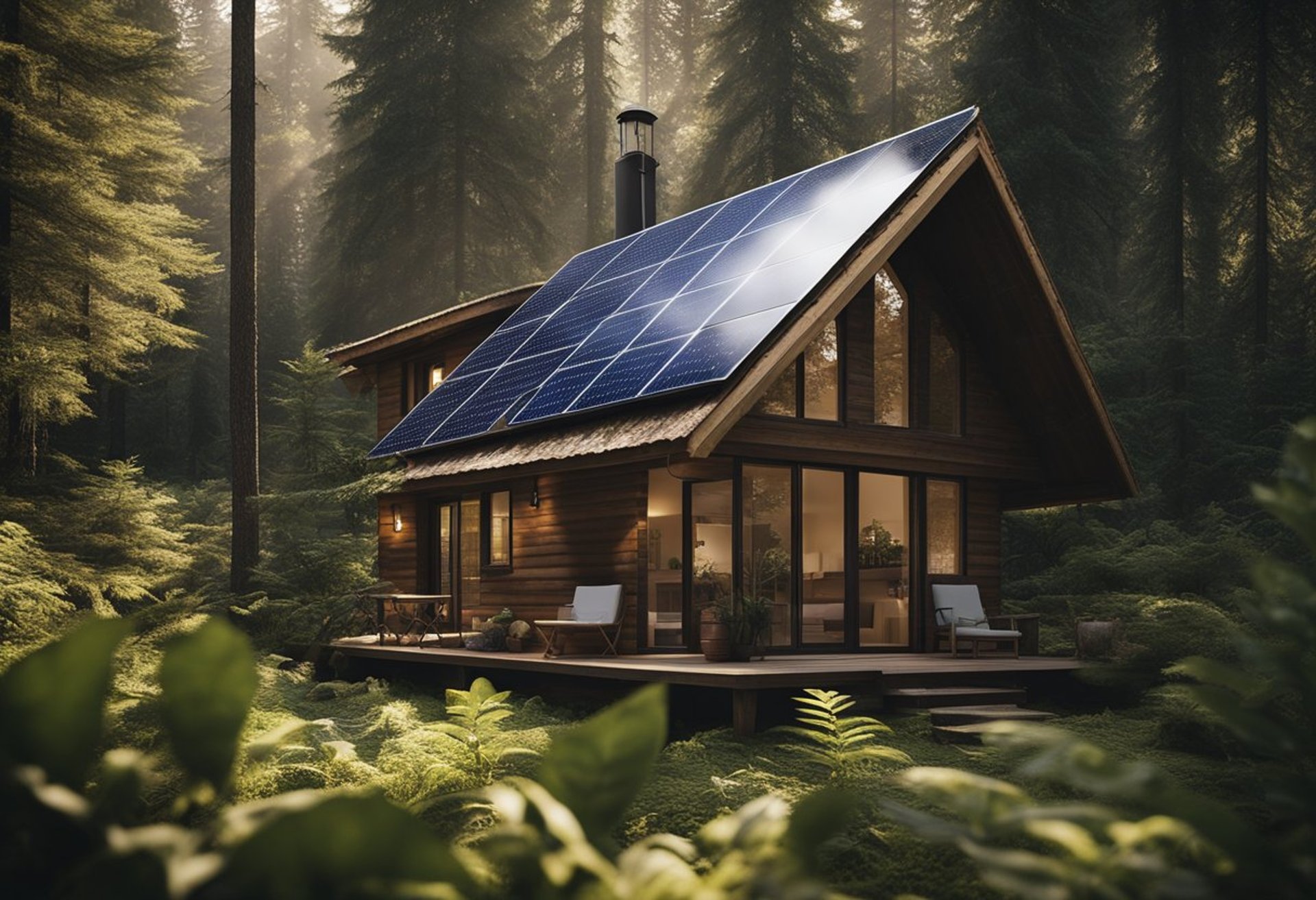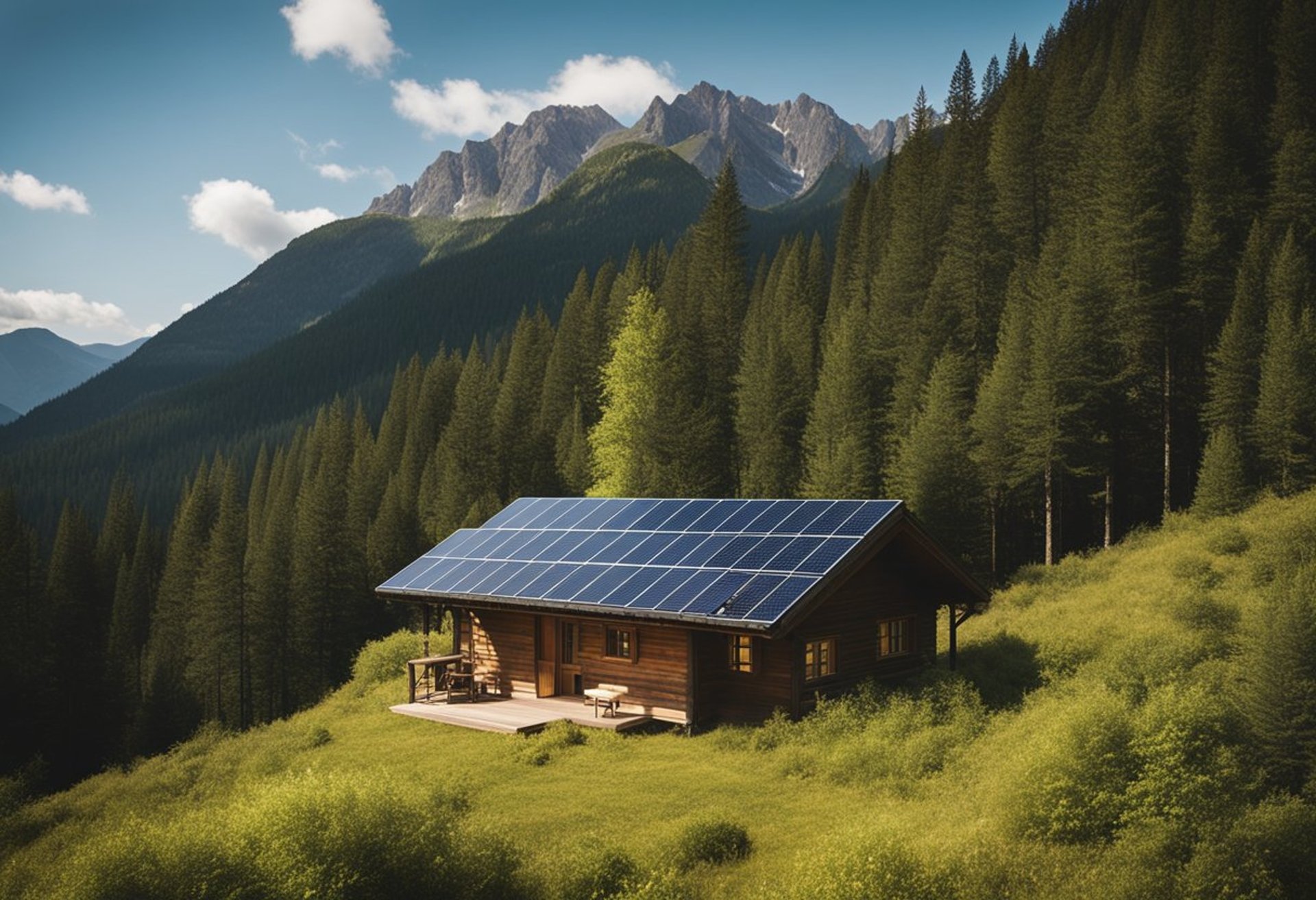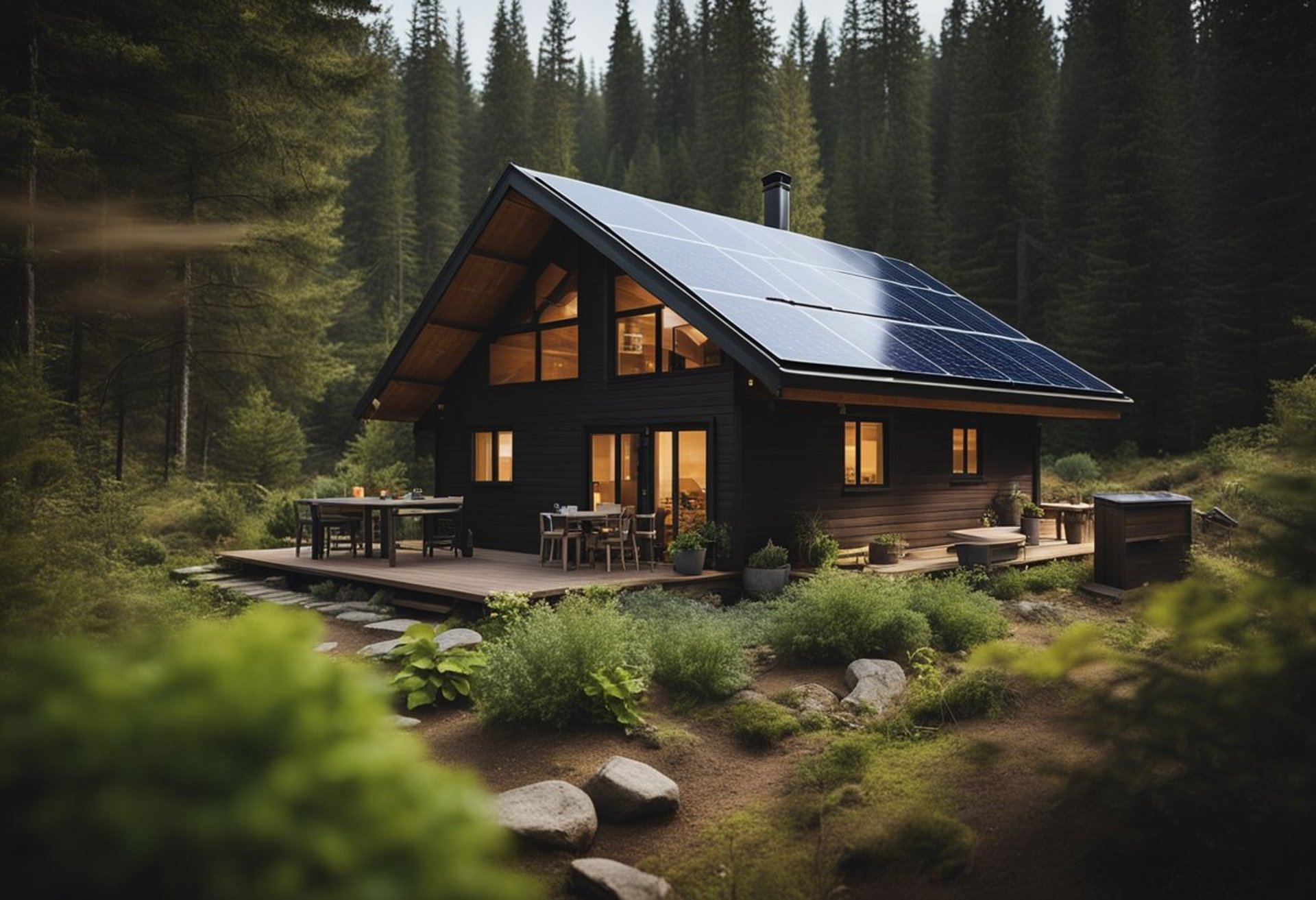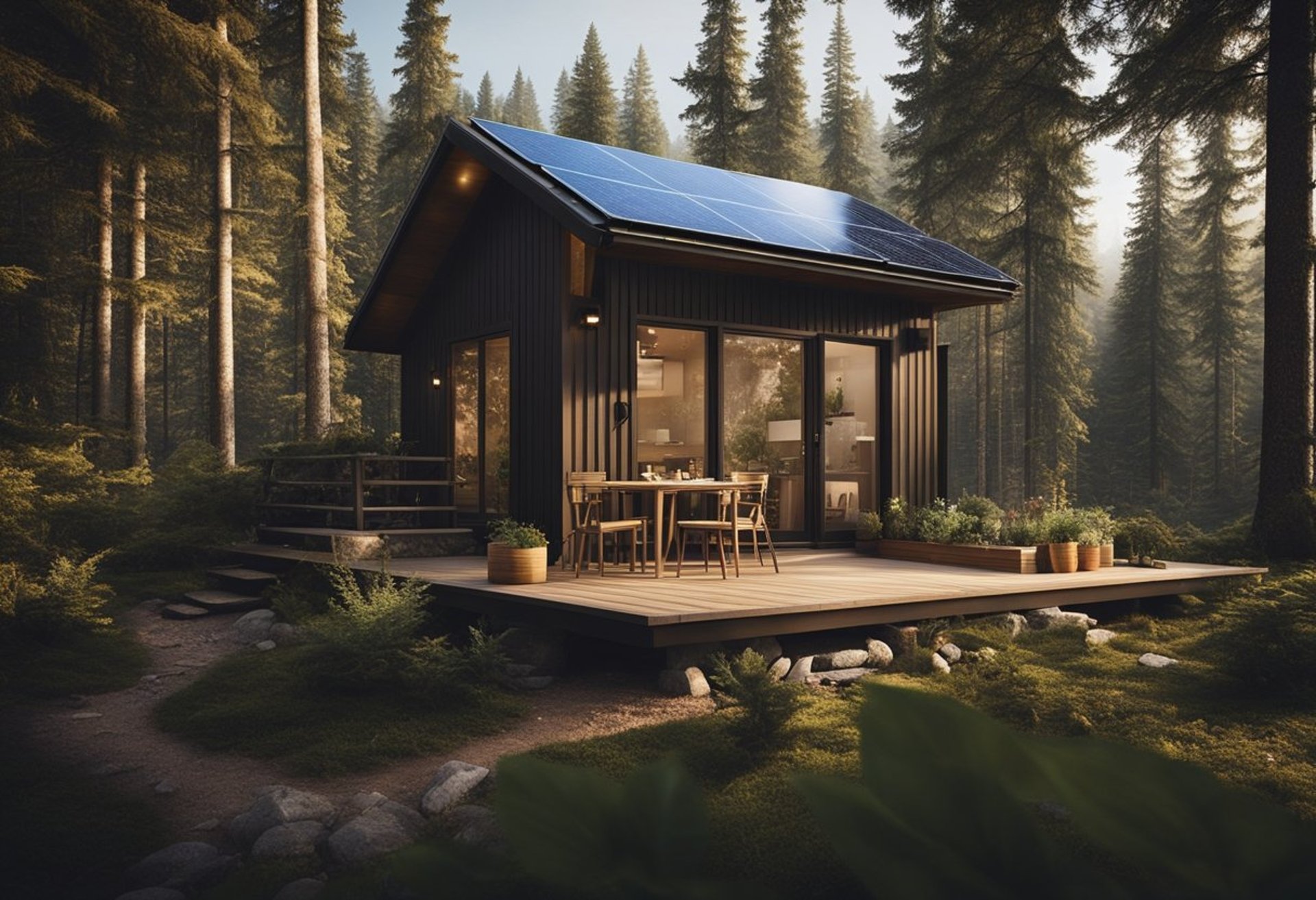Off Grid Living for Beginners: A Practical Guide to Self-Sufficiency and Sustainability
Off-grid living has gained popularity among those seeking independence and a sustainable lifestyle. For beginners, starting this journey involves understanding the basics of self-sufficiency and carefully planning the transition. With the right mindset and resources, anyone can successfully embrace a life away from conventional utilities.
Many are drawn to the idea of living off the grid to reduce their ecological footprint and gain greater control over their daily lives. Essential skills and systems play a crucial role in ensuring a smooth and fulfilling off-grid experience. From energy generation to food production, understanding these components is vital for maximizing the benefits of this lifestyle.
By exploring practical steps and strategies, newcomers can be well-prepared for their off-grid adventure. With dedication and the right information, they can turn their vision of self-sufficient living into a reality.
Key Takeaways
Essential knowledge and planning are crucial for a successful off-grid transition.
Understanding off-grid systems enhances sustainability and self-sufficiency.
Developing practical skills supports a thriving life away from traditional utilities.
Understanding Off-Grid Living
Off-grid living involves a lifestyle where individuals or families live independently of public utilities. This section explores the fundamental concepts of off-grid living, its benefits, and common misconceptions.
The Basics of Off-Grid Living
Off-grid living means generating one’s own energy, sourcing water, and managing waste without reliance on public systems. Key elements include solar panels, wind turbines, and efficient water collection systems.
Individuals typically choose remote locations, often with ample natural resources. They design homes that meet specific needs, focusing on sustainability. Biodiesel generators might supplement power needs, while composting toilets conserve water and reduce waste.
A comprehensive plan is essential before transitioning. This may include budgeting for initial investments in equipment and infrastructure.
Benefits of Choosing an Off-Grid Lifestyle
Choosing an off-grid lifestyle offers several advantages. It promotes self-sufficiency and reduces dependence on external resources. Living off-grid often results in lower utility bills and minimal ongoing costs, leading to significant savings over time.
Moreover, it fosters a closer connection to nature. Many experience an enhanced quality of life through quieter surroundings and reduced stress. Off-grid living can also minimize one’s carbon footprint, as it encourages renewable resource utilization.
Additionally, it allows individuals to acquire new skills. These may range from gardening to basic construction, enhancing craft and self-reliance.
Common Misconceptions
Many misconceptions surround off-grid living that may discourage potential adopters. One prevalent belief is that it requires complete isolation and a rugged lifestyle. In reality, many off-grid setups can be quite comfortable and even luxurious.
Another misconception involves the idea that off-grid living is too expensive. While initial investments can be high, potential long-term savings can outweigh upfront costs significantly.
Lastly, some think that off-grid living is impractical or impossible in urban areas. However, many urban dwellers successfully adopt off-grid practices, such as vertical gardens and rooftop solar panels, demonstrating versatility in different environments.
Planning Your Off-Grid Transition
Transitioning to off-grid living requires careful thought and preparation. Key aspects include setting realistic goals, evaluating personal needs and capabilities, and selecting an appropriate location. Each piece plays a crucial role in ensuring a smooth shift to this lifestyle.
Setting Realistic Goals
Establishing achievable goals is fundamental when moving to off-grid living. First, individuals should define what “off-grid” means for them, whether it includes complete energy independence or just reducing reliance on public utilities.
Timeline: Create a timeline for the transition and set milestones.
Budget: Determine a clear budget, factoring in initial setup costs and ongoing expenses.
Skill Development: Identify skills needed, such as gardening, renewable energy setup, or building maintenance, and commit to learning them gradually.
The clearer the goals, the easier it will be to maintain motivation throughout the transition.
Assessing Your Needs and Capabilities
Understanding personal needs and capabilities is critical for a successful off-grid experience. Start with a thorough self-assessment that covers:
Lifestyle: Consider the current lifestyle and how it may change.
Family Needs: Evaluate the needs of all family members, including their comfort levels and preferences.
Skills Inventory: Take stock of existing skills and determine which areas require development.
By aligning personal readiness with off-grid goals, individuals can create a more tailored and successful transition plan.
Choosing the Right Location
Selecting a suitable location is one of the most important aspects of going off-grid. Factors influencing this choice include:
Climate: Different climates will support various types of crops, energy systems, and housing designs.
Resources: Access to water, wood, and fertile land is essential.
Legal Regulations: Research zoning laws, building codes, and other regulations that may affect off-grid living.
Creating a list of potential locations and evaluating each against personal criteria will help ensure the best fit for an off-grid lifestyle.
Essential Off-Grid Systems
Establishing a reliable off-grid system requires essential components that ensure self-sufficiency. Key areas of focus include water collection and purification, energy generation, and waste management.
Water Collection and Purification
Water is critical for off-grid living. Collecting rainwater is one efficient method. A rainwater catchment system consists of gutters, downspouts, and a storage tank. This setup allows for effective collection and storage of natural rainfall.
To ensure water quality, purification methods must be implemented. Common techniques include:
Filtration: Using carbon filters to remove impurities.
UV Treatment: Employing ultraviolet light to kill pathogens.
Boiling: Simple yet effective for eliminating microorganisms.
Each method has its benefits. Filtration systems are easy to set up, while boiling is universally accessible.
Solar Power and Other Renewable Energies
Solar power is a predominant choice for those living off the grid. It converts sunlight into electricity through solar panels. Homeowners can install:
Photovoltaic (PV) Panels for direct energy use.
Solar Water Heaters for hot water.
Batteries can store excess energy for nighttime use. It's vital to calculate energy needs to determine the number of panels required. He or she should consider efficiency ratings and warranties when selecting solar equipment.
Besides solar, alternatives like wind turbines and micro-hydro systems can also enhance energy independence. Wind systems leverage wind flow, while micro-hydro utilizes river currents for power generation.
Waste Management Solutions
Proper waste management is necessary for hygiene and environmental safety in off-grid living. Composting toilets are a popular option. They decompose human waste using aerobic bacteria, producing compost that can be used for non-food plants.
Greywater systems aid in recycling. They treat wastewater from sinks and showers for irrigation purposes. Homeowners must consider local regulations on waste disposal.
A solid waste plan should include:
Regular collection schedules.
Recycling methods.
Composting organic matter.
These strategies promote sustainability and minimize the ecological footprint associated with off-grid living.
Building and Maintaining Your Homestead
Creating an efficient homestead involves careful planning and ongoing management. This includes designing a suitable home, establishing food sources, and staying on top of maintenance tasks.
Designing Your Off-Grid Home
When designing an off-grid home, consider sustainability and energy efficiency. The orientation of the house should maximize natural light and passive heating. Materials play a crucial role; opting for sustainable resources helps reduce the carbon footprint.
Roofing choices matter too. Metal roofs offer durability and excellent rainwater collection. Insulation should be high-quality to keep the home warm in winter and cool in summer. Ensure to incorporate areas for renewable energy systems like solar panels or wind turbines, making the home truly self-sufficient.
Gardening and Food Self-Sufficiency
To ensure food self-sufficiency, establish a diverse garden. Start with raised beds or traditional plots, choosing vegetables suited for the local climate. Companions like tomatoes and basil can help maximize space and yield.
Incorporate permaculture principles to create a sustainable garden layout. Use crop rotation to maintain soil health. Additionally, consider berry bushes, fruit trees, and herbs for variety.
Implementing a rainwater harvesting system can assist in irrigation, reducing dependency on external water sources. Preserving food via canning or dehydration will also increase self-sufficiency throughout the year.
DIY Maintenance and Repairs
Regular maintenance is crucial for the longevity of the homestead. Establish a seasonal checklist that includes tasks like checking the roof, inspecting the plumbing, and servicing the generator.
Learning basic repair skills is essential. Tasks such as patching leaks, replacing window screens, and fixing appliances can save money. Online tutorials can be valuable resources for those new to DIY repair.
A well-stocked toolkit should include items like hammers, screwdrivers, wrenches, and essential safety gear. Developing a habit of routine checks increases the likelihood of catching issues early, preventing larger problems later.
Thriving Off the Grid
Living off the grid requires strong community ties, ongoing education, and a proactive approach to healthcare. Each of these elements plays a critical role in ensuring a successful and sustainable lifestyle away from traditional systems.
Community and Relationships
Building a supportive community is essential for thriving off the grid. Independent living can be isolating, so fostering relationships helps mitigate loneliness.
Engaging with neighbors creates opportunities for resource sharing, whether it's tools, knowledge, or labor. Many off-grid individuals participate in local groups or cooperatives to strengthen bonds.
Having a reliable network can also provide emotional support during challenging times. Social gatherings, skill-sharing workshops, and communal meals enhance the sense of belonging and collaboration.
Education and Continuous Learning
Education is crucial for off-grid living. Knowledge in sustainable practices, such as permaculture, renewable energy, and basic mechanics, can enhance self-sufficiency.
Many individuals pursue forms of education ranging from online courses to hands-on workshops. Learning from experienced off-gridders can offer invaluable insights into day-to-day living strategies.
Continuous learning enables adaptation to new challenges. This mindset fosters resilience, encouraging problem-solving and creative thinking in various situations, from gardening to maintaining energy systems.
Healthcare Considerations
Accessing healthcare off the grid requires proactive planning. Remote living often limits proximity to medical facilities, making self-care and first aid knowledge vital.
Individuals should learn basic medical skills, such as wound treatment and recognizing symptoms of common illnesses. Stocking a well-equipped first aid kit is essential for emergencies.
Building relationships with local healthcare providers can also help. This connection ensures a reliable source of medical advice and support when necessary. Holistic health practices and regular physical activity contribute to maintaining well-being while living off the grid.













